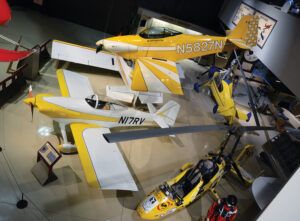
Being a military brat, we moved around some when I was a kid. Having good parents meant we sampled the local fare as much as possible. Therefore, when living in Southern California the first time, I was too young for much more than living the lifestyle by hanging out in the basket on the front of my mom’s bicycle as she pedaled me to nursery school. Had a pillow for comfort, a great view forward and it never rained.
In New Hampshire it was death by small, dark colonial house. We toured a few of those, including Betsy Ross’ down Philly way and Paul Revere’s tin smithery. That’s where I learned pewter was a real thing and not just some funny word made up on the playground.
But upon arrival in Virginia, it was a forced march through the museum marathon that is Washington, D.C. Obviously, the old Smithsonian’s aerial presentations on the mall were a hit, and I do recall thinking we could have saved the Army Medical Museum for some time other than immediately after lunch.
Anyway, museums have been a learned taste, and I’ve often wondered why there wasn’t an air racing museum at Stead Field or perhaps a factory museum in Aurora, Oregon. Of course, the answers to those questions are fairly self-evident after even quickly considering the small population interested in little airplanes, the cost of real estate, and having seen one rivet, you’ve pretty much seen them all. But still, Experimentals, kit aircraft, homebuilts, or whatever label you chose for our bent for self-construction would seem to benefit from a hall of champions, so to speak.
Of course, we have one in the EAA Museum in Oshkosh, and a fine place it is, too. Furthermore, the EAA, bowing to reality, displays a wide array of aviation artifacts, including a good many that are not homebuilt specific, say Paul Poberezny’s P-51 for example. It’s no great risk to presume none of us has anything against P-51s, but as we narrow our focus to the Experimental/Amateur-Built category, our thoughts must necessarily coalesce around the core homebuilt philosophy. And as I’ve daydreamed about just such a museum, the inevitable question of which aircraft would a curator curate has been the critical thought.
Starting at the beginning, the Wright Flyer was a homebuilt, and even if Orville and Wilbur weren’t EAA members, I’d put the Flyer front and center in my museum. As the Smithsonian isn’t about to put the real Flyer on tour, having just pried it out of the London Science Museum in 1948, we’d have to build yet another replica. As for the rest of pre-WWI aviation, yes, it is a fertile ground of homegrown experimentation, but as this was the pioneering era and nearly every box kite was in its own way remarkable, I think we have to draw the line somewhere. Inside that line would be the Demoiselle, offered in plans form by no less than Alberto Santos-Dumont. And I’d have room for anything by Glen Curtis, hot-rodder that he was. But generally this was the era of wild experimentation and the putative epoch of industrial aviation; not quite homebuilding as we see it today and well-celebrated elsewhere in any case.
The Great War was not homebuilder territory either, but the interwar years certainly were. Of course we must pay homage to the Pietenpol in all it’s cast-iron Model A engine glory (a museum would be the best place for one of these…) as it is one of the first examples of designed-to-homebuilding purpose and can reasonably be cited as the granddaddy of homebuilts. Certainly there is room for several of these parasols as they continue to spark the homebuilder’s imagination and come in a variety of engine flavors.
We can agree that Mr. Wittman and his various creations—mainly racing machines—are powerful representations of the everyman’s building creed. And so we would have a Bonzo (and the other Bonzo) and Buttercup, Tailwind and Chief Oshkosh, although the EAA and Smithsonian museums would have something to say about those choices as they already have them. There are others—Mike, Pete, and the Firecracker, but we’ll keep moving for now.
Which brings us to post WW-II and the pivotal point in the homebuilding movement. The historians say the immediate postwar period was when homebuilding was bent under the federal boot, a natural response to the carnage engendered by the more homespun of barnyard aircraft. And before the EAA arrived to spearhead personal aviation—along with the already existing AOPA, which let’s not forget traces its wing roots to keeping the individual flying in the face of government and commercial pressure to clear the skies for professionals—there was one last holdout for homebuilt aircraft: midget air racing. Typically recalled as the Goodyear Midgets (today morphed into the IF1 class), this was the place for the homebuilder in the late ’40s and early ’50s.
Thus, our museum could have an entire wing (let’s not hear any flap about atrocious puns) dedicated to these single-seaters, nearly all one-off, amateur design and builds. From this 30-strong herd and its progeny, it would be easy to pick Swee’ Pea, Shoestring and Rivets; more arguable would be the Cosmic Winds. They, like Nemesis much later, have strong ties to Lockheed and might be considered pro-amateur builds, but as I’d take Nemesis in a flash, so I’d also take a Cosmic Wind. I’ll also bypass for the moment a slew of interesting pylon aircraft (Cassutt, Owl, Miller, et. al.) sacrificed on the altar of limited space in this column. But should our proposed museum be at Stead, then all should be included.
The Meat of the Matter
At last we get to the most exciting era of homebuilding, beginning in the late 1950s until today. Where to start? Clearly the Pitts Special of 1944 was a pivotal airplane, although its mass impact didn’t really start until 1962 when Curtis started offering plans. Hardly as popular but generating a far more numerous legacy was Ray Stits’ Playboy of 1952. It would eventually catalyze the entire line of VanGrunsven RVs, after all.
Often overlooked as the first kit homebuilt is the thoroughly kitted 1954 Schweizer 1-26A/C glider, a distinction usually afforded in its completeness to the Christen Eagle two decades later. Both airplanes are definite museum material, but it’s good to remember the Schweizer was a standard category airplane, the only such kit we can think of. Also important to document is the roughly 1960s era of sport biplanes. The single-seat Stolp Adams Starduster of 1957 got the Starduster Corporation up and running, then roaring with the Starduster Too in 1969, which I’d augment with the Hatz CB-1 of 1968. A Knight Twister would be good, among others.
Also important in getting the homebuilt market widely distributed was the Wag-Aero Sport Trainer, an Experimental kit version of the J-3 Cub. Wag-Aero’s emphasis on spreading their catalog across the country was no doubt a big help here.
If the ’60s were an era of sportsman craft, it also saw the gestation of higher performance, more cross-country capable homebuilts. The Thorp T-18 emerged in 1963, presaging the aluminum monoplane revolution to come, which started just two years later with the RV-1 in 1965. Still competitive with its RV cousins, the T-18 is a museum absolute.
Where would a museum be without some controversial planes such as the BD-5, which I’d include as a cautionary tale in how not to market a kit. Ditto the first jet kit in the BD-10 debacle. The irresistible Polen Special could also be considered somewhat warily as a very high performance machine, intelligently never kitted as it wasn’t for everyone, but an absolute sensation in 1972.
Another department in our museum would be dedicated to the “modern” era, marked by the composite revolution and the rise of backcountry flying.
Of course Rutan designs are a given here, with the 1975 VariEze my choice as volume gatekeeper to the canard era and Voyager as its crown. For plastic tractors, the premolded 1979 Glasair TD is the entry point and would be followed up naturally by Glasair IIIs and Lancair Legacys at the least and the Lancair IV-P vying with the Evolution to mark the apogee to the big-engine speedster set.
For sure an Avid Flyer is needed to simultaneously denote the beginning of the light Rotax and backcountry flying movement, although its Kitfox derivative is no doubt also required due to its volume success.
In the post-2000 wing, I’d move heaven and earth to get Cory Bird’s Symmetry. Like the Hughes H-1, Symmetry is one of those over-the-top one-offs combining breathtaking design, execution and performance, albeit in specialized form. I’d also get an RV-10 (2003) and Carbon Cub (2009) to keep it company. For modern record setting, the McFarland brothers Wankel-powered Harmon Rocket is a must, too.
There are many others worthy of such a museum. We’d like to hear which ones you’d include—or exclude—at [email protected].

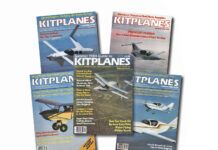
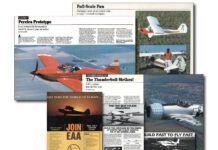
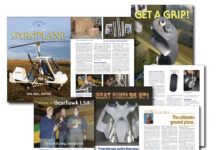
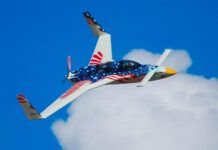
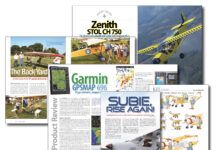
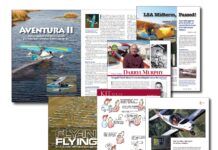
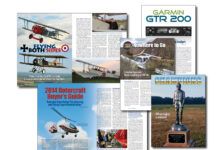
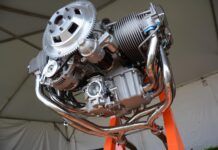
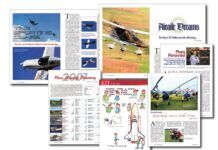
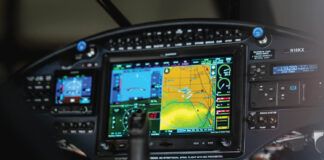
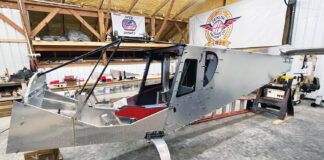
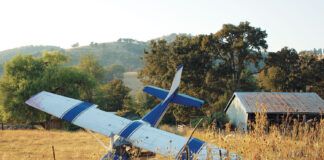
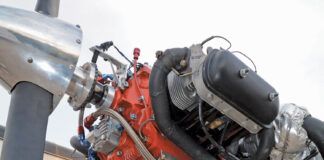
You can not leave out the Fly Baby, the winner of a EAA design contest. I have seen examples of this airplane in a couple of aircraft museums: Pima Air Museum, Tucson, AZ, and Mid-America Air Museum, Liberal KS. To Be honest, I thought the Fly Baby looked a little out of place in both of those museums, but it could be a star attraction in the museum you are suggesting.
Full Disclosure: I started building my Fly Baby in 1992, first flight was in 1999. (N92RT).
Great article, Tom. Don’t know how I missed it first time around. Your choices are great.. Additions might include the Corben Baby Ace, which according to many at EAA, is the plane that got experimental aviation jump started after the war with the Poberezny MI articles). Another one that is less known, but may have an even bigger role in the existence of homebuilts in the US is the Bogardus Gee Bee:
https://airandspace.si.edu/multimedia-gallery/4549640jpg